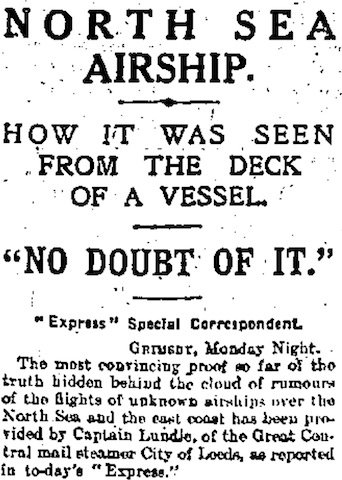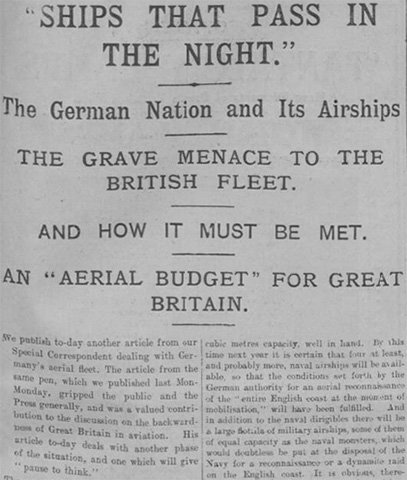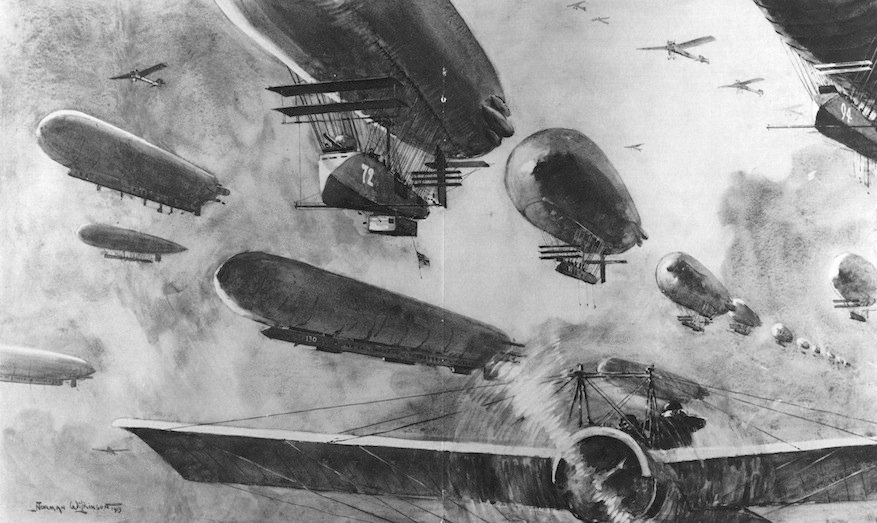Tuesday, 4 March 1913
The Dundee Courier today has a long article providing more details of the airship seen by Captain Lundie and the crew the City of Leeds off Grimsby — ‘It was travelling at a fast rate, and somewhat resembled a shark in shape’ (p. 5) — and the Daily Express has an even longer, more reflective […]









